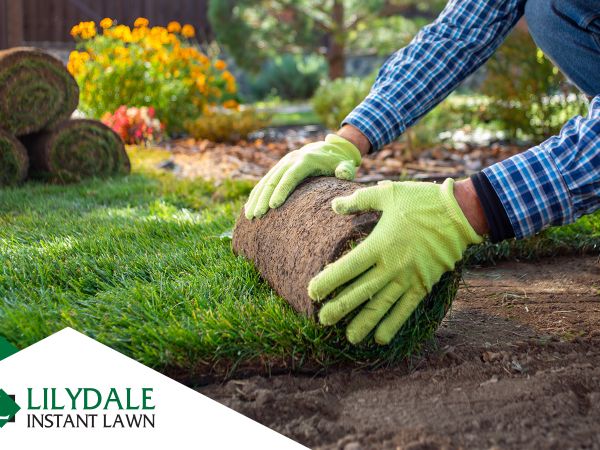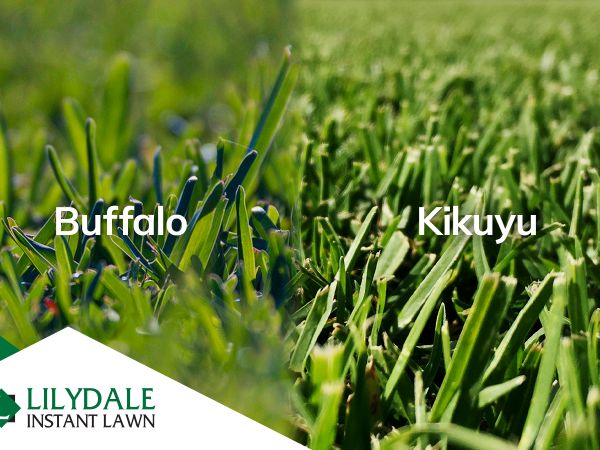Common causes of fungal diseases
While fungal diseases are usually rare in Victorian residential lawns due to our dryer, less humid climate, they can appear when the conditions are right. Some of the common causes include:
- Humid and very wet conditions
- Overwatering or watering at night
- Soil compaction
- Over fertilising or using the wrong type of fertiliser
- Poor mowing habits, typically mowing too low
Identifying fungal diseases
If you’re ever not sure what’s wrong with your lawn, it’s best to consult an expert for advice on identifying and treating lawn pests and diseases.
Common signs of fungal diseases in your lawn include:
- Coloured patches or rings in your lawn, typically yellow, white, light grey or dark brown
- Powdery coatings or threads on the grass blade surface
- Thinned out areas, or areas of wet or slimy-looking grass
- Leaf blades with irregular discolouration or texture
Treating fungal diseases
- Aeration to loosen soil, remove compaction, and improve drainage. This will improve your lawn's ability to absorb water, nutrients and oxygen.
- Fertilising regularly and not over or under fertilising your lawn will help prevent and treat fungal diseases.
- Removing thatch
- Avoid overwatering, particularly in shaded areas
- Apply broad-spectrum fungicide following the product label or consult a professional

Identifying Lawn pests
Common signs of mites, grubs, or other major pest infestation include:
- Brown or deformed leaf blades at the growing point of the leaves.
- The grass surface is bunched with bare patches.
- Brown areas with lime green to dark brown dead leaves.
- The lawn becomes dry and straw-like, as it would during severe drought conditions.
- Grass that can be peeled back easily from the soil surface as the roots have been eaten away.
Treating mites and pest infestation
The best way to treat a mite infestation is to use a miticide. Spraying insecticides can only be done by someone with the relevant training and certification, so it’s best to hire a professional.

Common causes of fungal diseases
While fungal diseases are usually rare in Victorian residential lawns due to our dryer, less humid climate, they can appear when the conditions are right. Some of the common causes include:
- Humid and very wet conditions
- Overwatering or watering at night
- Soil compaction
- Over fertilising or using the wrong type of fertiliser
- Poor mowing habits, typically mowing too low
Identifying fungal diseases
If you’re ever not sure what’s wrong with your lawn, it’s best to consult an expert for advice on identifying and treating lawn pests and diseases.
Common signs of fungal diseases in your lawn include:
- Coloured patches or rings in your lawn, typically yellow, white, light grey or dark brown
- Powdery coatings or threads on the grass blade surface
- Thinned out areas, or areas of wet or slimy-looking grass
- Leaf blades with irregular discolouration or texture
Treating fungal diseases
- Aeration to loosen soil, remove compaction, and improve drainage. This will improve your lawn's ability to absorb water, nutrients and oxygen.
- Fertilising regularly and not over or under fertilising your lawn will help prevent and treat fungal diseases.
- Removing thatch
- Avoid overwatering, particularly in shaded areas
- Apply broad-spectrum fungicide following the product label or consult a professional

Identifying Lawn pests
Common signs of mites, grubs, or other major pest infestation include:
- Brown or deformed leaf blades at the growing point of the leaves.
- The grass surface is bunched with bare patches.
- Brown areas with lime green to dark brown dead leaves.
- The lawn becomes dry and straw-like, as it would during severe drought conditions.
- Grass that can be peeled back easily from the soil surface as the roots have been eaten away.
Treating mites and pest infestation
The best way to treat a mite infestation is to use a miticide. Spraying insecticides can only be done by someone with the relevant training and certification, so it’s best to hire a professional.






























